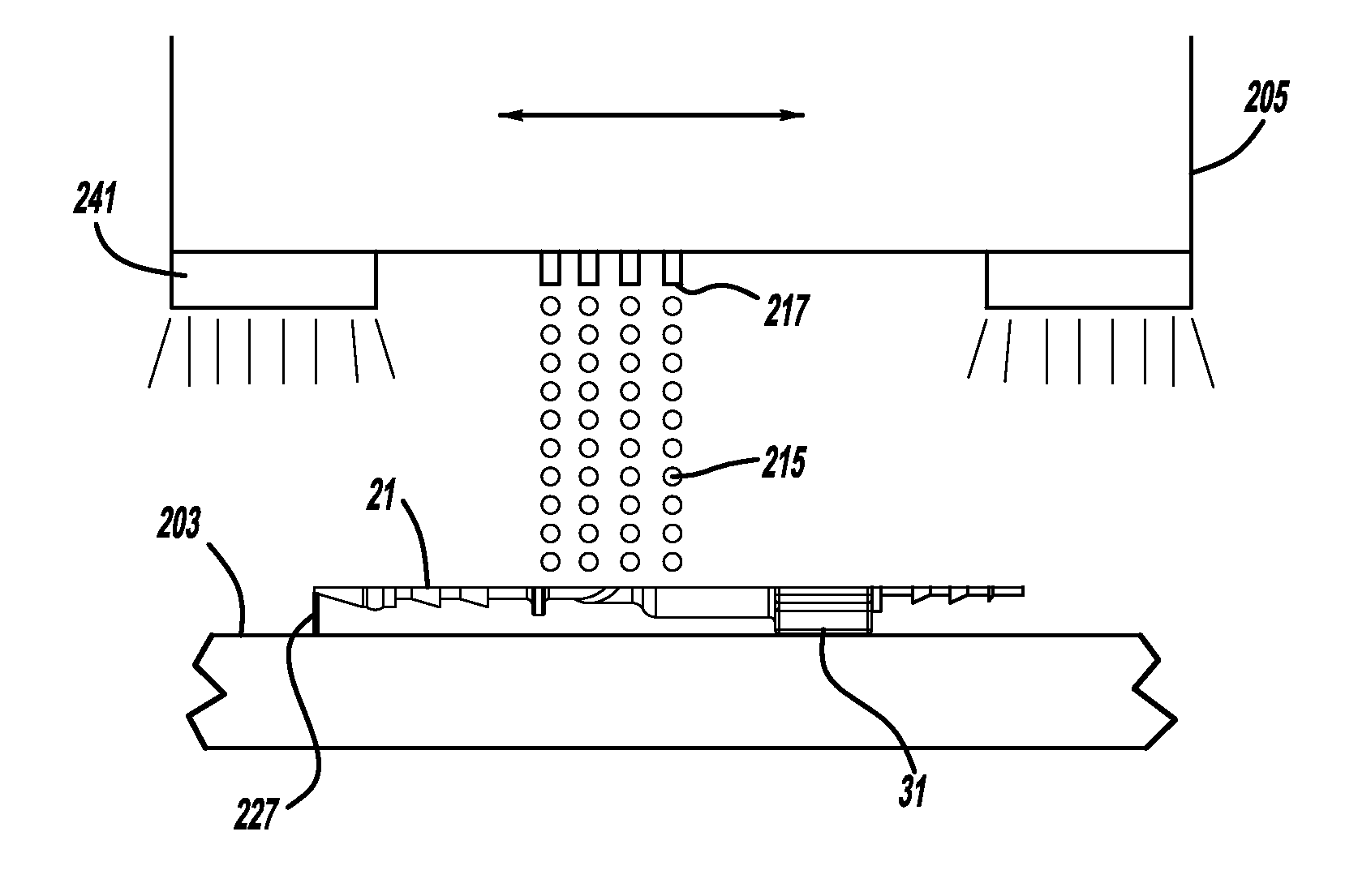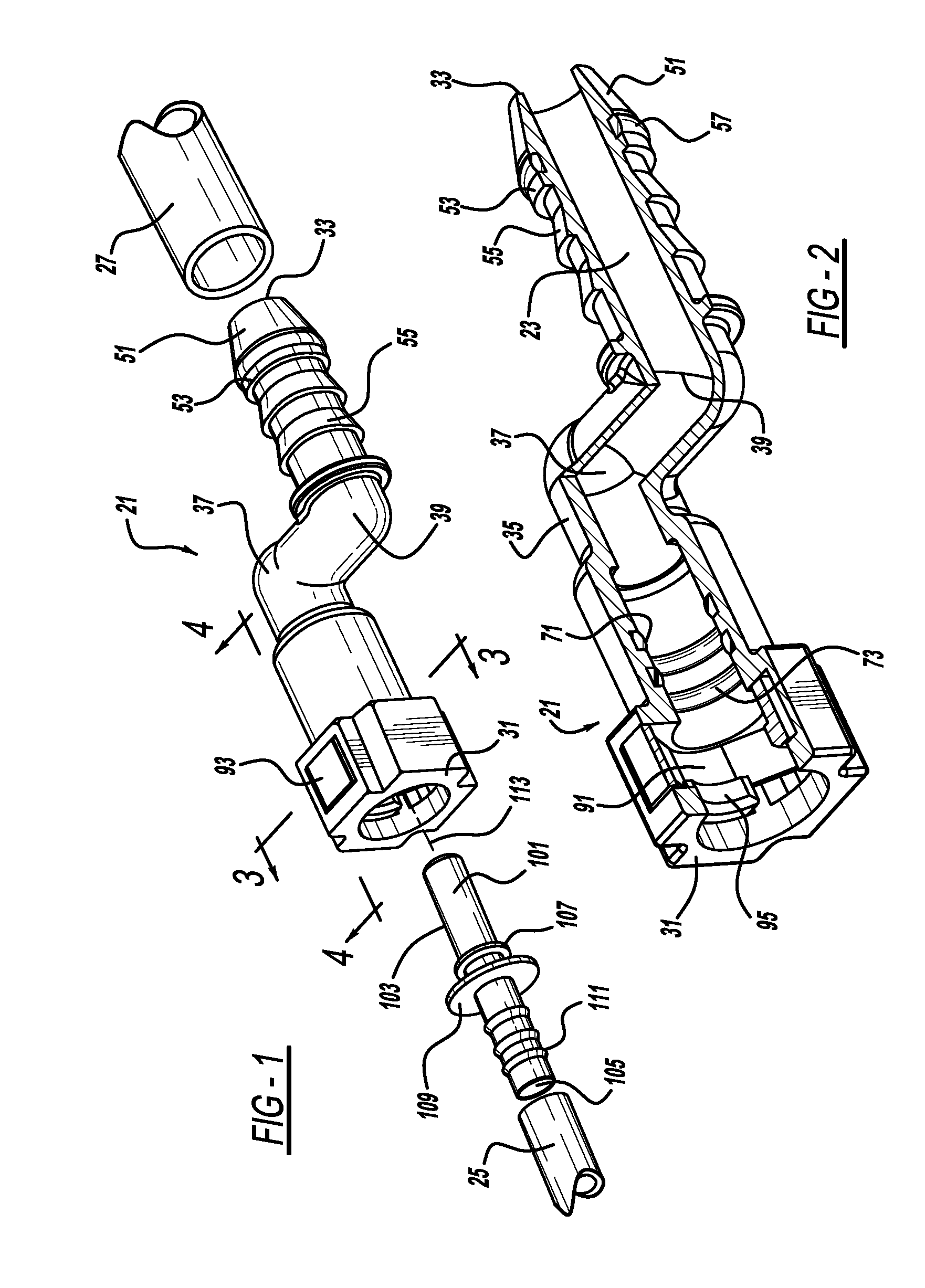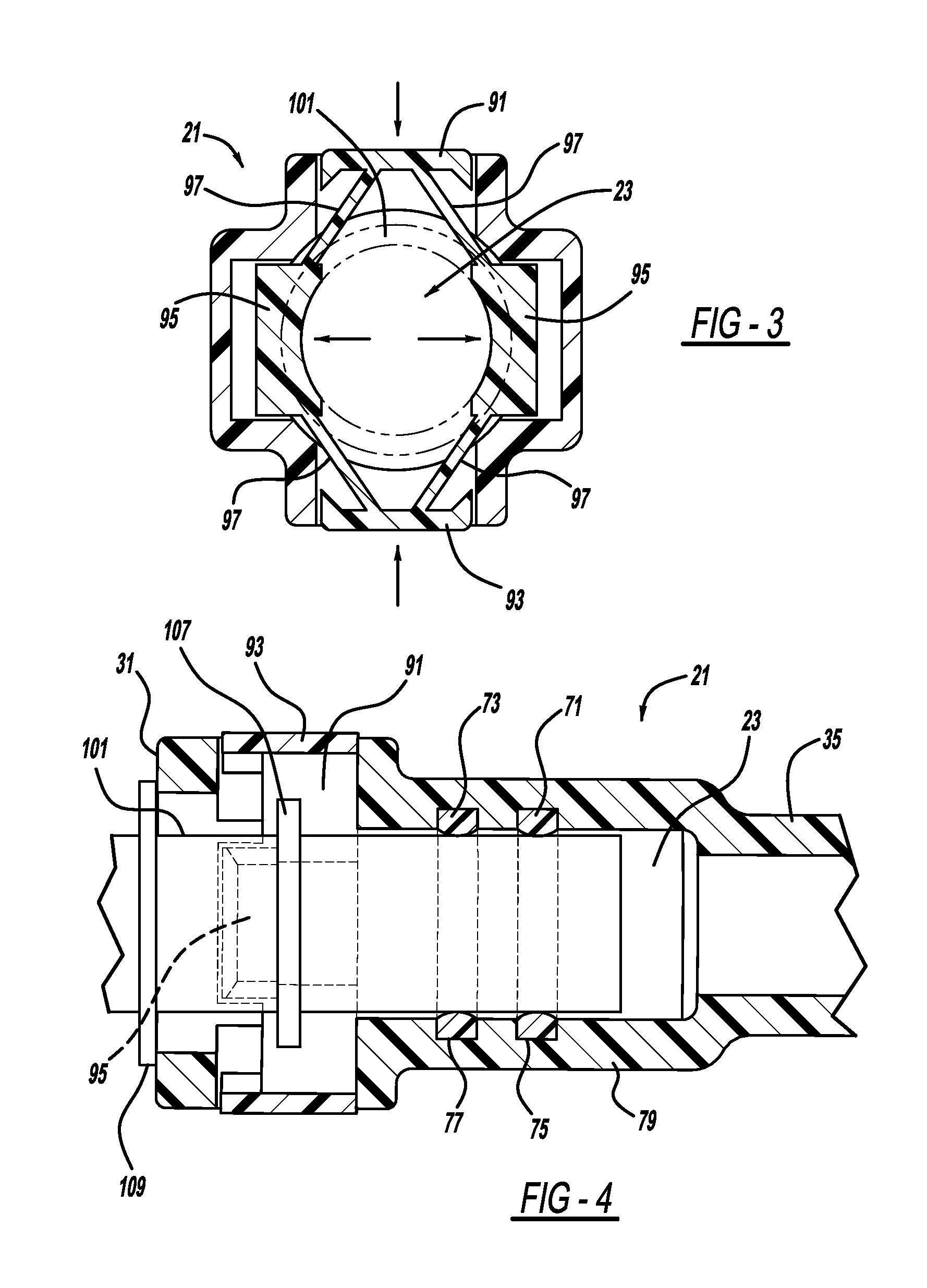Connectors manufactured by three-dimensional printing
- Summary
- Abstract
- Description
- Claims
- Application Information
AI Technical Summary
Benefits of technology
Problems solved by technology
Method used
Image
Examples
Embodiment Construction
[0015]A first preferred embodiment conduit, and more particularly a quick connector 21, operable to carry a fluid through a hollow bore 23 therein is illustrated in FIGS. 1-4. For example, connector 21 can be employed in an automotive vehicle to connect multiple air conditioning, brake fluid or fuel tubes wherein the liquid or gaseous fluid flows through bore 23 bridging between the coupled tubes. Connector 21 may also be employed in industrial, laboratory or residential buildings to connect tubes carrying water, air or other fluids therebetween. Exemplary tubes 25 and 27 are shown in FIG. 1, and the term “tube” as used herein should be construed in the broadest reasonable manner and is preferably a flexible, hollow and elongated polymeric member but can alternately be a rigid polymeric, metallic or composite pipe or the like.
[0016]Connector 21 includes an enlarged female end 31 and a reduced male end 33. An elongated middle or body 35 extends between ends 31 and 33. A section at ma...
PUM
| Property | Measurement | Unit |
|---|---|---|
| Pressure | aaaaa | aaaaa |
| Mass | aaaaa | aaaaa |
| Force | aaaaa | aaaaa |
Abstract
Description
Claims
Application Information
 Login to View More
Login to View More - R&D
- Intellectual Property
- Life Sciences
- Materials
- Tech Scout
- Unparalleled Data Quality
- Higher Quality Content
- 60% Fewer Hallucinations
Browse by: Latest US Patents, China's latest patents, Technical Efficacy Thesaurus, Application Domain, Technology Topic, Popular Technical Reports.
© 2025 PatSnap. All rights reserved.Legal|Privacy policy|Modern Slavery Act Transparency Statement|Sitemap|About US| Contact US: help@patsnap.com



